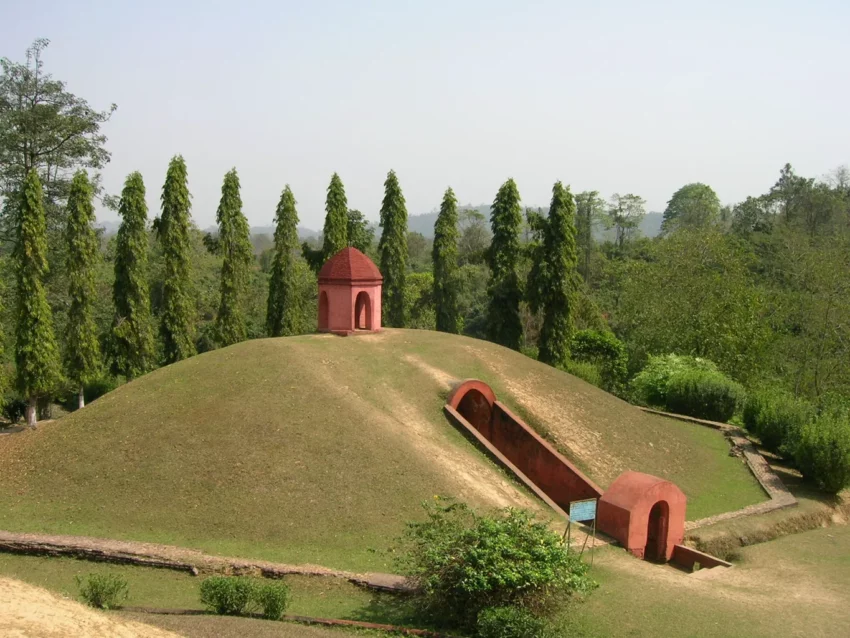The Fascinating Legacy of Assam’s Charaideo Maidams
The Charaideo Maidams, burial mounds of the Ahom dynasty in Assam, India, are steeped in history and spiritual significance. These unique structures, also known as Frang-Mai-Dam or simply Moidam (meaning “burial of the dead” in the Ahom language), are considered the resting places of Ahom royalty. Often compared to Egypt’s pyramids or ancient Chinese tombs, these mound-like tombs reflect the Ahom people’s reverence for their ancestors. In fact, the Charaideo Maidams are so culturally significant that they’ve earned a spot on the UNESCO World Heritage list. Let’s explore what makes these monuments so remarkable.
Get your dose of History via Email
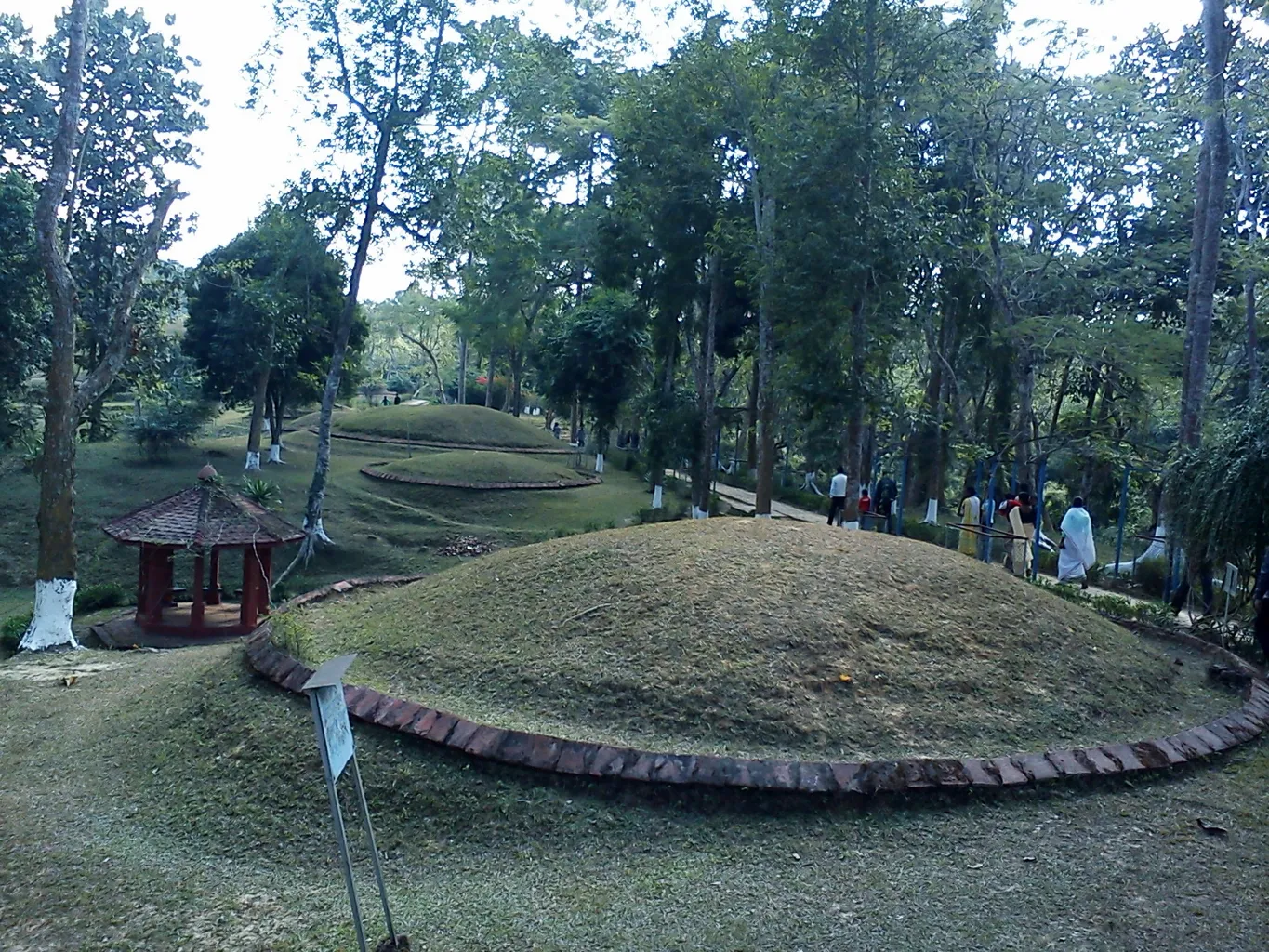
The Structure and Design of Maidams
Maidams have a distinct architectural style, combining both simplicity and grandeur. Each structure begins with an underground vault, divided into chambers. The main chamber houses the body of the deceased king along with items meant to accompany him in the afterlife—objects that reflect the Ahom belief in an existence beyond death. Other chambers were often used for burying the servants, caretakers, and even animals, who were believed to continue their roles in the afterlife.
Above the vault lies a domed, hemispherical mound, made of earth, which rises high above the ground. At the peak of this mound stands an open pavilion called chow chali. The entire structure is then enclosed by an octagonal wall, which gives it an imposing presence. However, the height of many maidams has decreased over time, eroded by natural elements.
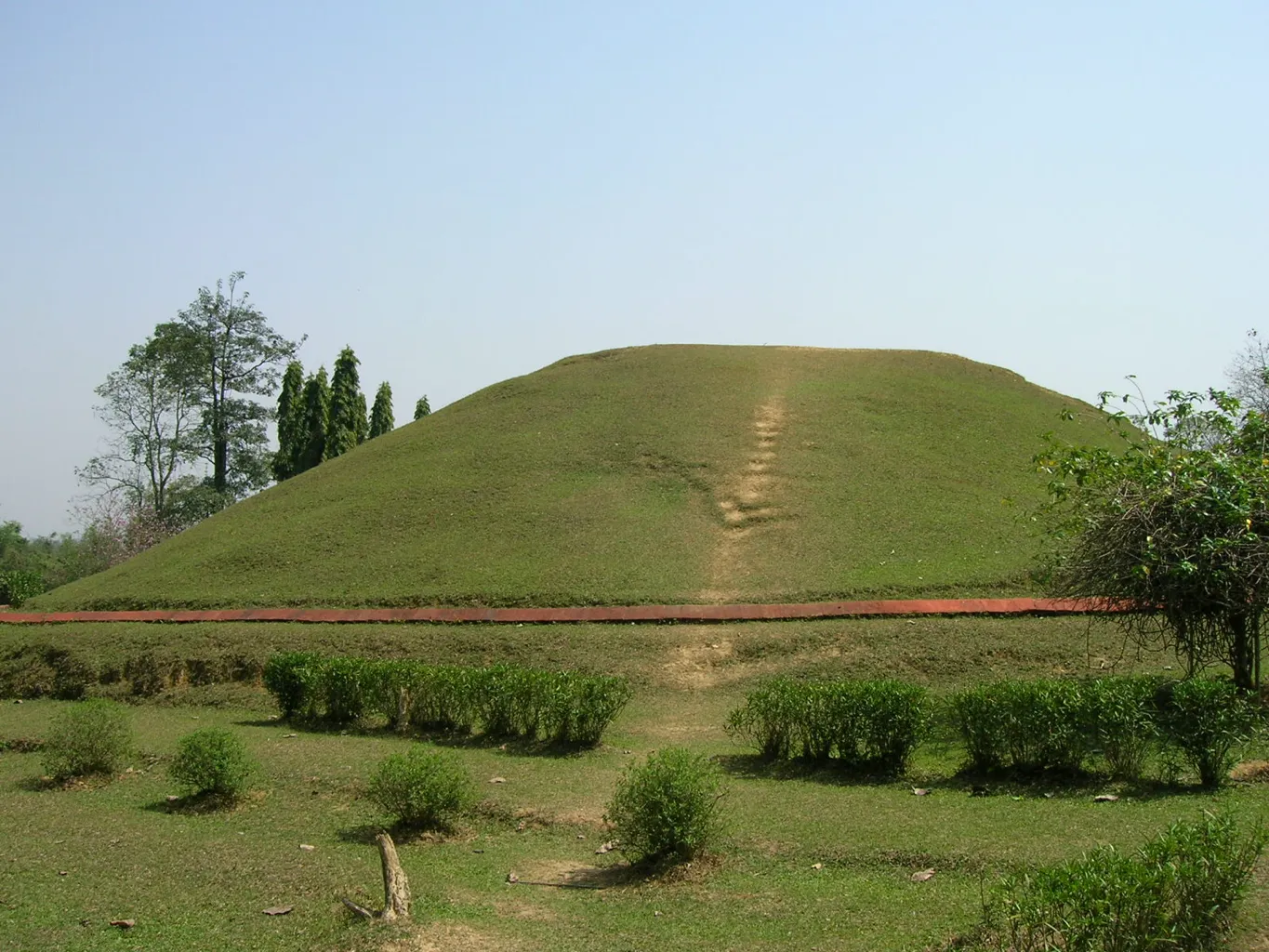
A Unique Funeral Tradition
The Ahoms practiced burial rites, a sharp contrast to the Hindu custom of cremation. Although later Ahom kings adopted Hinduism, they maintained their distinct burial practices. Instead of burning the body, they would cremate the king and then bury the ashes within the maidam. This unique blend of customs highlights the Ahoms’ cultural resilience, preserving their identity even as they adapted aspects of a new religion.
Today, only certain clans, such as the Mo-Hung, Mo-Cham, Chaodang, and Mo-Plong, continue these ancient burial traditions, reflecting a deep respect for their heritage.
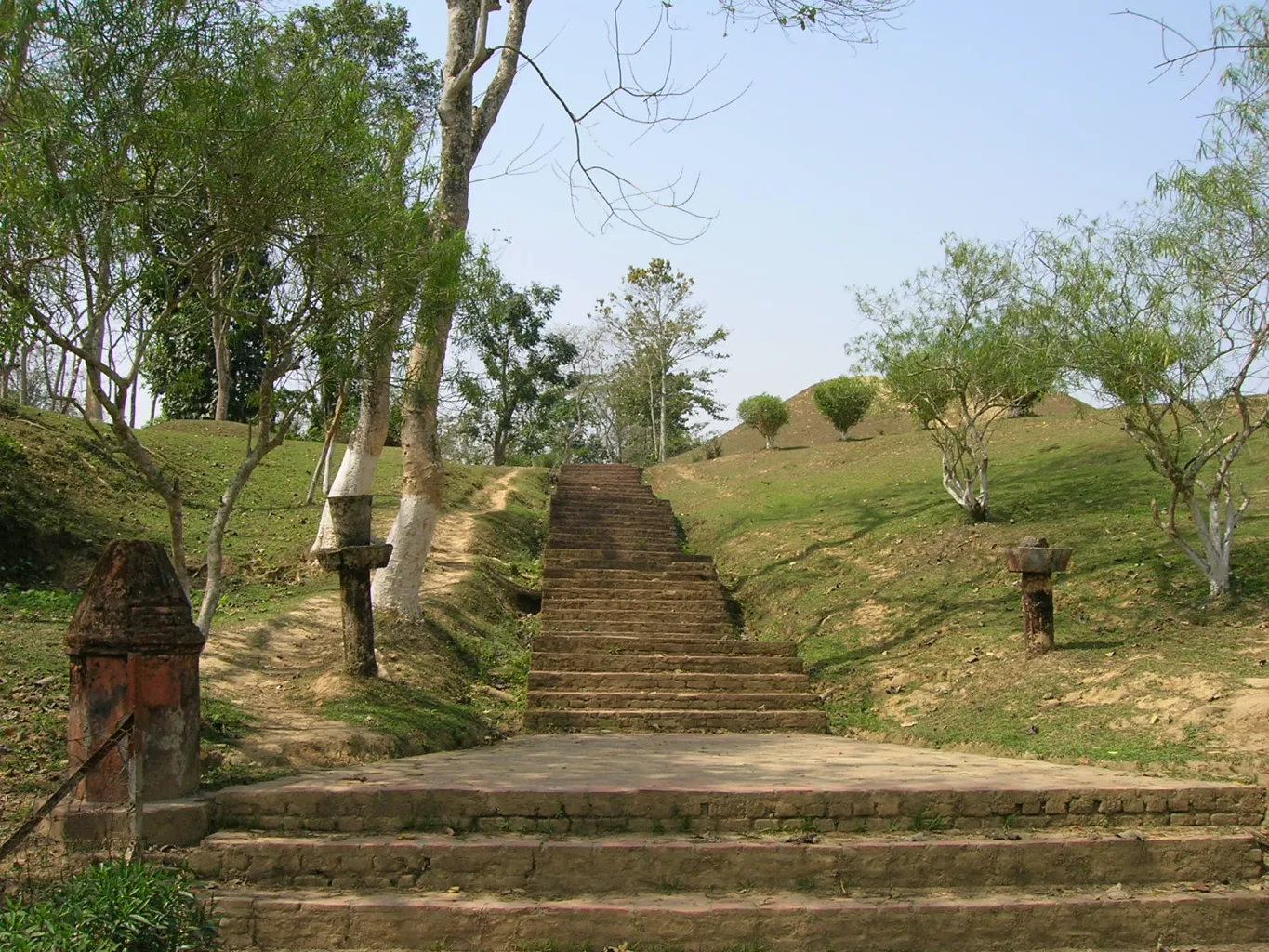
The Role of Sacrifice and Tradition
In the early years, maidams also bore the dark legacy of human sacrifice. When a king passed away, at least ten individuals—servants, loyalists, or warriors—were often buried alive with him to serve him in the afterlife. This practice, however, was abolished under the rule of King Rudra Singha in the 18th century, reflecting a gradual shift in the Ahom worldview.
The construction of maidams was restricted to certain clans. Only the Gharphaliya and Lakhurakhan clans could bury the remains of kings and queens. Furthermore, a designated officer known as the Chang-Rung Phukan oversaw the construction, functioning as the chief architect of these elaborate tombs. He was assisted by Maidam Phukans (officers) and Maidamiya (guards) responsible for the protection and upkeep of the structures.
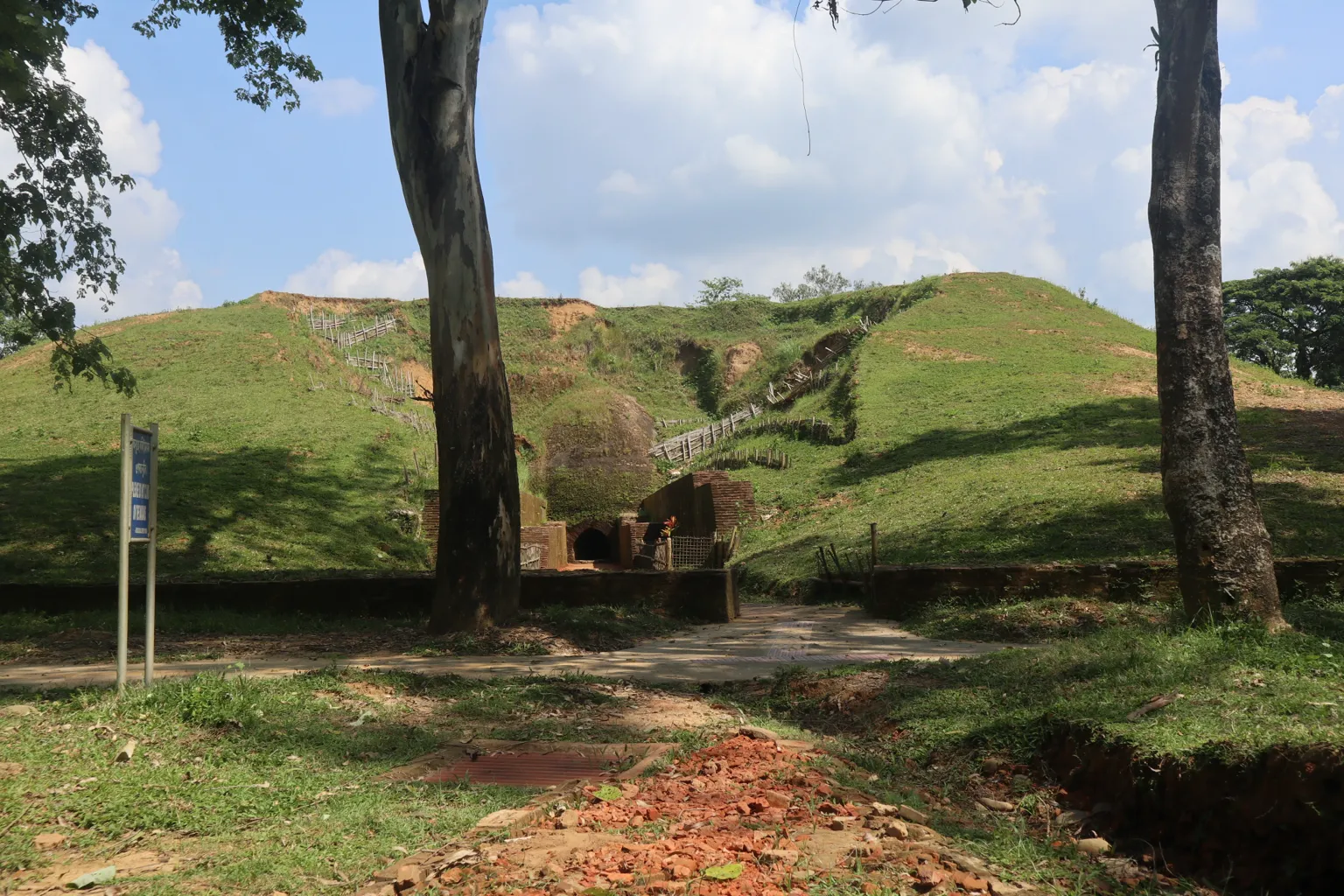
Historical Challenges and Excavations
The maidams have endured centuries of conflict and looting. Historical records, such as the Chang-Rung Phukanor Buranji, detail the items originally buried in these tombs. However, much of this wealth was lost over the years to raiders. Notably, Mughal general Mir Jumla looted the maidams during his occupation of the Ahom capital in the 17th century, and later, the British continued the plundering after they took control of Assam in 1826. By the time official excavations began in the 19th and 20th centuries, many maidams had already been robbed of their treasures.
An example of this is Maidam No. 2, excavated between 2000 and 2002 by the Archaeological Survey of India. Despite evidence of prior looting, this site still yielded a variety of artifacts. Archaeologists discovered skeletal remains of five individuals, ivory decorations, wooden objects, and an ivory panel engraved with the royal Ahom insignia. These finds provide valuable insights into the Ahom royal culture and artistry, preserving fragments of a history otherwise lost to plunder and decay.
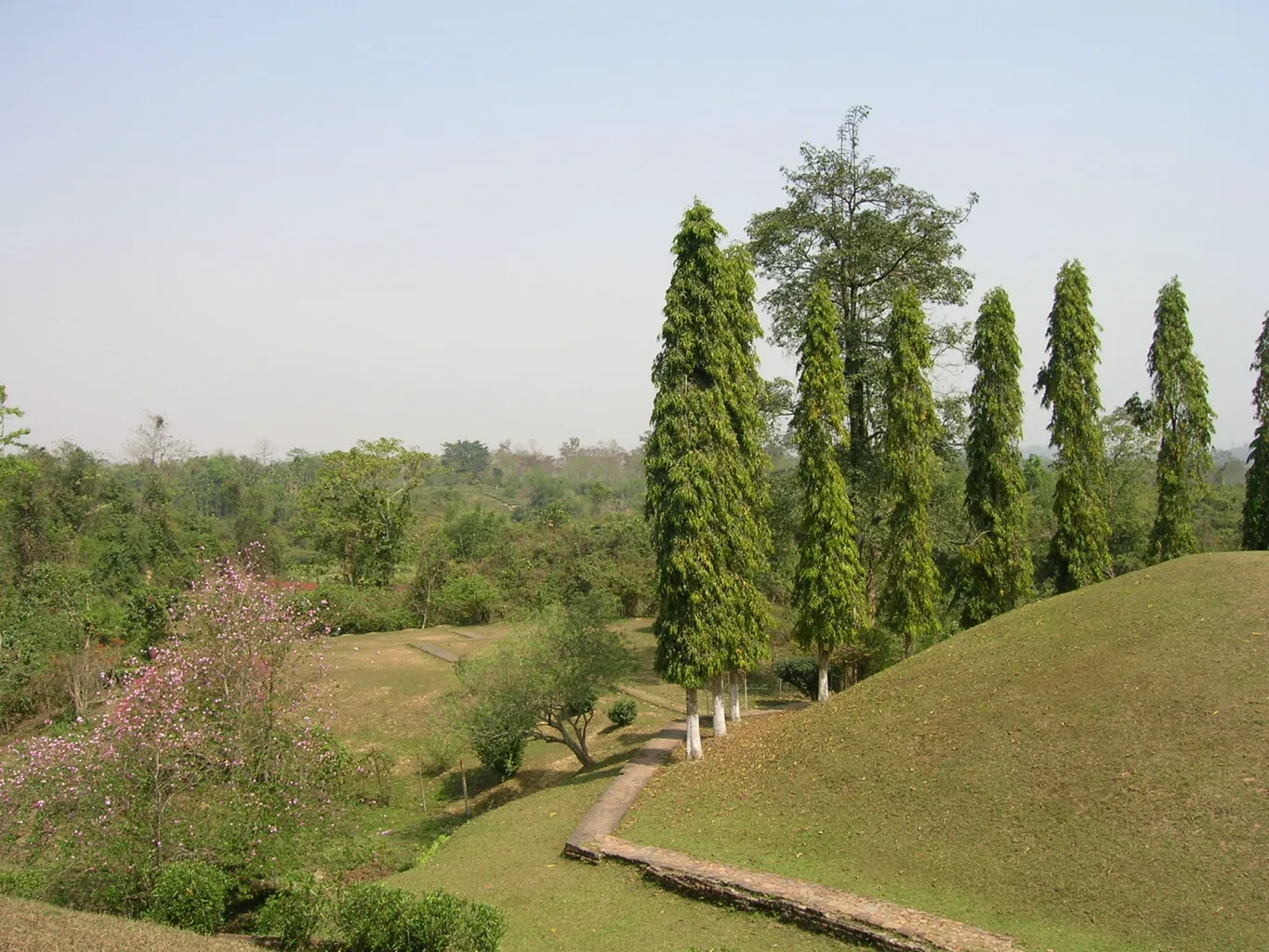
Charaideo as a Symbol of Ancestral Worship
For the Ahom people, maidams are not merely burial sites; they are sacred grounds for ancestor worship. The annual festival of Me-Dam-Me-Phi honors their forebears, especially the Ahom royals. Any disturbance or excavation of these maidams is deeply offensive to the community, as it disrupts the connection between the living and the ancestral spirits.
In the distant past, maidams were also a site of symbolic burial for enemies. After military victories, the severed heads of enemy warriors would sometimes be interred within the tombs. In one notable case, after defeating the Chutia kingdom in 1524, the heads of the Chutia king and his son were buried at Charaideo, marking a mix of triumph and ritualistic closure for the Ahom warriors.
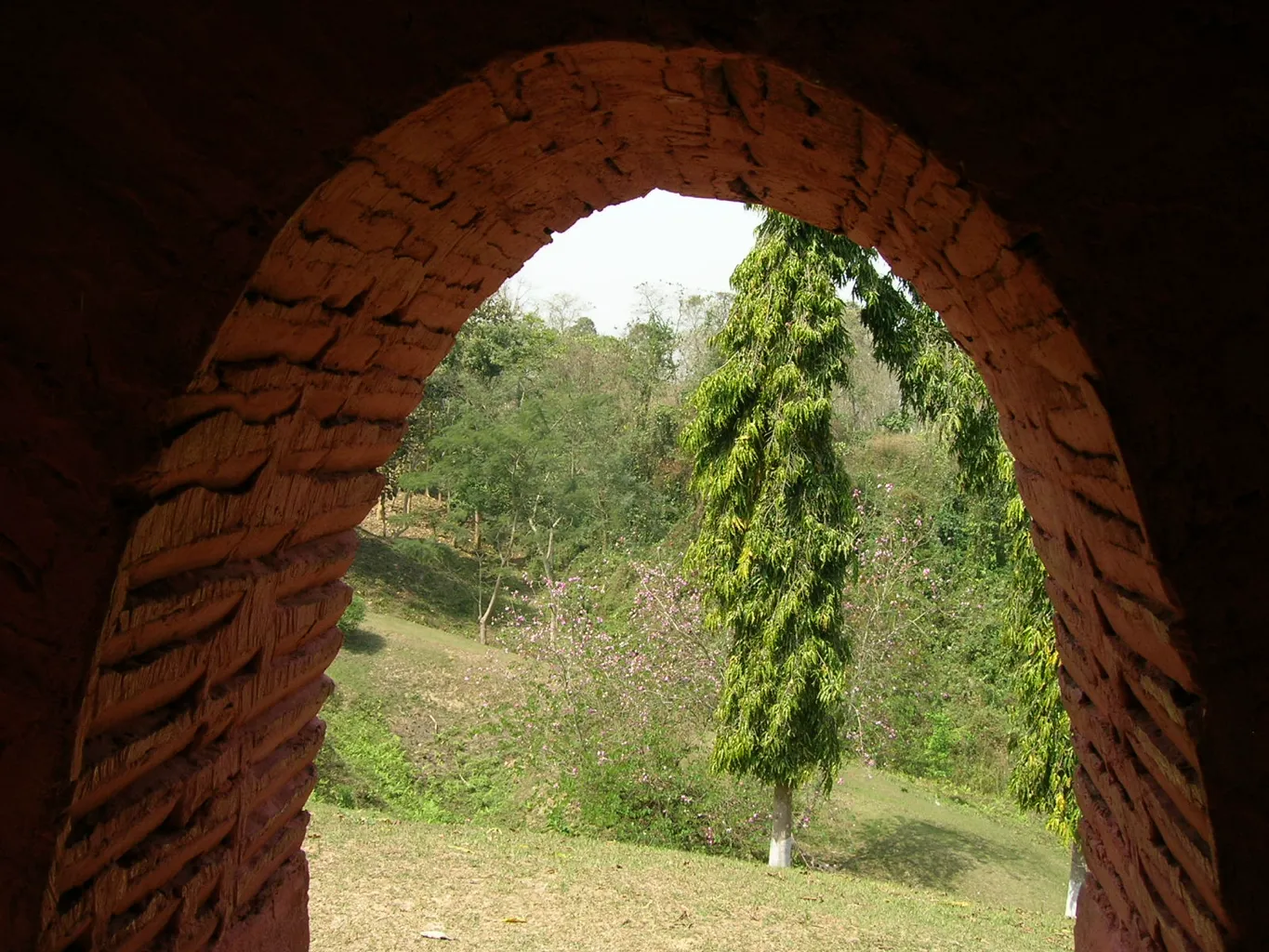
The Future of the Maidams
With their recent UNESCO recognition, the Charaideo Maidams are now gaining the global attention they deserve. This recognition not only helps preserve these structures but also highlights the rich and diverse cultural tapestry of Assam. For many years, these mounds lay quietly, holding within them the stories of a powerful dynasty and a people who honored their ancestors with devotion and grandeur. As more people learn about the maidams, perhaps there will be a renewed respect for this unique tradition and the history it represents.
In the end, the maidams of Charaideo stand as a reminder of the Ahom people’s profound respect for their lineage. Their tombs may not soar as high as the pyramids of Egypt, but they are equally monumental in the cultural memory of Assam. Through careful preservation, these ancient structures can continue to inspire future generations with tales of kings, battles, and the unwavering bond between the living and the departed.
Sources:

